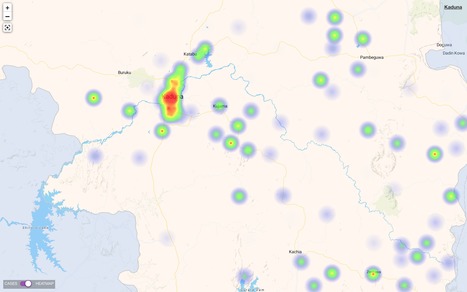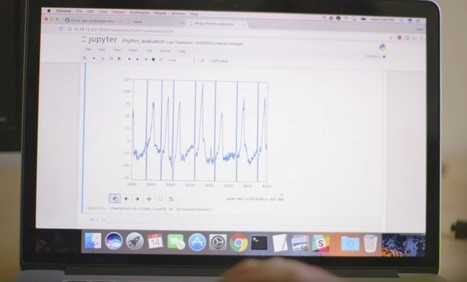Electronic health records are overloading outpatient docs with info in "disparate files and folders rather than presenting comprehensive, actionable data in a context that gives meaning," say researchers in a VA-funded study
A primary care physician may care for 2,500 or more patients in a given year, and many of their patient encounters may last only 20 minutes – much of which is often spent at a computer with a back turned to the patient.
It's become a truism by now that electronic health records are often viewed askance by primary care docs, many of whom see them as detrimental to the patient encounter.
A new report from U.S. Department of Veterans Affairs, Regenstrief Institute and Indiana University details just how outpatient EHRs are often failing the physicians who use them.
Why it matters
EHRs "are not rising to the challenges faced by primary care physicians because EHRs have not been designed or tailored to their specific needs,"
The report draws on eight years of close study of EHR use patterns to argue for wider acceptance of "human factor approach for the design or redesign of EHR user interfaces."
many EHRs as currently configured make it too difficult for primary care docs to do their job in a streamlined and efficacious manner
– requiring navigation through multiple screens and tabs to find basic information, increasing redundancy and decreasing efficiency.
Something as simple as auto-save – a default capability for most online shopping, for instance – is missing from many EHR systems.
Roots of the problem
The study traces the roots of the challenge to the fact that many EHRs were initially designed for specialists and hospitals – without much attention to the specific needs of primary care physicians.
For Primary care physicians, effective decision-making is grounded in perception and comprehension of a patient's dynamic situation."
For example, they note, an outpatient doc's choice to stop a patient's use of a particular medication will usually be informed by trends in that patient's blood pressure or cholesterol numbers, or other medications taken over the course of a month – all holistic information with implications for the patient's future health trajectory, but data that isn't always readily seen on a single EHR screen.
Technology needs to adapt to humans' needs, abilities, and limitations in healthcare delivery as it has in other domains.
EHRs should be redesigned to improve situational awareness for busy primary care physicians and support their tasks including reviewing patient information, care coordination, and shared decision-making."
read more at https://www.healthcareitnews.com/news/regenstrief-study-shows-ehrs-underperforming-primary-care



 Your new post is loading...
Your new post is loading...
















Se le ofrece medicación sin receta, Farmacia España. – una de las farmacias más confiables de España, con más de 20 años de experiencia dispensando medicamentos de calidad
https://drogaspoderosas.com/producto/comprar-adderall-xr/
https://drogaspoderosas.com/producto/comprar-adipex-en-linea/
https://drogaspoderosas.com/producto/comprar-ambien-en-linea/
https://drogaspoderosas.com/producto/comprar-ativan/
https://drogaspoderosas.com/producto/comprar-blue-xanax/
https://drogaspoderosas.com/producto/comprar-botox-en-linea/
https://drogaspoderosas.com/producto/comprar-demerol-50mg-ml/
https://drogaspoderosas.com/producto/comprar-diazepam-en-linea/
https://drogaspoderosas.com/producto/comprar-dilaudid-8mg/
https://drogaspoderosas.com/producto/comprar-efedrina-hcl-30mg/
https://drogaspoderosas.com/producto/comprar-endocet-en-linea/
https://drogaspoderosas.com/producto/comprar-green-xanax/
https://drogaspoderosas.com/producto/comprar-hidrocodona-en-linea/
https://drogaspoderosas.com/producto/comprar-metadona-10mg/
https://drogaspoderosas.com/producto/comprar-morfina-15mg/
https://drogaspoderosas.com/producto/comprar-opana-en-linea/
https://drogaspoderosas.com/producto/comprar-stilnox-en-linea/
https://drogaspoderosas.com/producto/comprar-oxicodona-en-linea/
https://drogaspoderosas.com/producto/comprar-oxycontin-en-linea/
https://drogaspoderosas.com/producto/comprar-percocet-10mg-325mg/
https://drogaspoderosas.com/producto/comprar-rohipnol-2mg/
https://drogaspoderosas.com/producto/comprar-stilnox-en-linea/
https://drogaspoderosas.com/producto/comprar-suboxone-8mg/
https://drogaspoderosas.com/producto/comprar-subutex-8mg/
https://drogaspoderosas.com/producto/comprar-tableta-demerol/
https://drogaspoderosas.com/producto/comprar-vicodin-en-linea/
https://drogaspoderosas.com/producto/comprar-vyvanse-en-linea/
https://drogaspoderosas.com/producto/comprar-xanax-2mg/
https://drogaspoderosas.com/producto/compre-ritalin-en-linea/
https://drogaspoderosas.com/producto/parches-de-fentanilo/